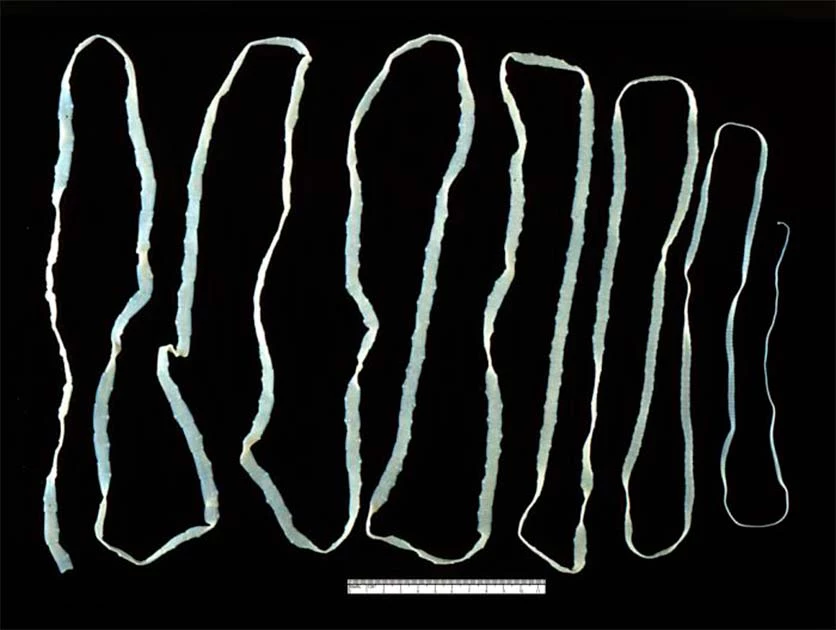They say beauty is pain, but when it comes to the tapeworm diet, things are much worse: beauty is literally a parasite. Beauty is also irredeemably faddish, and the surgically lifted, tucked, and filled bodies the media tries to sell to women today are the complete opposite end of the spectrum compared to Victorian beauty standards.
What was hot back in the 1830s was appearing that you had consumption, aka tuberculosis. Individuals with tuberculosis had “dramatically pale skin, an ethereal thinness, with red cheeks and a feverish glow.”
To look deathly pale, women would powder their faces with white powder or even wash their skin with arsenic. To look as thin as possible and achieve the ideal 16-inch (40 cm) waist, women began wearing corsets paired with fluffy skirts to emphasize further how small they could make their waist and stomach look.
Corsets made moving a challenge, caused muscles to weaken, and made breathing difficult. When a hot new diet came on the market that promised a woman she could eat whatever she wanted, whenever she wanted, and not gain weight, it was a hit. Even if it meant consuming a tapeworm.
The Tapeworm Diet
You might have heard of the tapeworm diet; it has been around for centuries and persists today in the 21st century. For those unfamiliar with the sick diet, an individual will take a pill that contains a tapeworm egg.

The egg would hatch, allowing the parasite to attach to the inner wall of the intestines of its host. Here it will absorb nutrients from food consumed by the host and it will grow longer and longer.
Tapeworms are members of the phylum annelida, also known as “segmented worms.” Segmented worms have over 22,000 different species, including earthworms, leeches, and ragworms. Because tapeworms are segmented worms, they can break off segments of their body, and as long as the head remains, the creature can regrow more segments.
Pieces of a tapeworm will break off the body and exit the body in feces. If infected feces enter water or soil, it can further infect other animals and people. When you hear of people getting a tapeworm, it’s usually because they have consumed raw or undercooked meat or fish that has been infected with the parasite and its eggs. For some strange reason, the idea that a little worm could keep you thin was worth taking a significant health risk.
- Heroin Cough Medicine? The Rise and Fall of Patent Medicine
- The Tobacco Enema: Blowing Smoke Up Your Backside?
You can find vintage ads online or in museum archives from the Victorian era that promote the tapeworm diet that tells women that they can eat all they want and they will stay thin. Fat was the enemy, and instead of a knight in shining armor to banish this monster, all one needed was a little pill with “sanitized tapeworms,” whatever that means.
Nothing about tapeworms is sanitary, but if you said it in print and slapped the name of a doctor, one who is fictional or hasn’t studied medicine, on a bottle, it was “safe and sanitary.” All a woman needed to do was take a pill with a tapeworm egg in it, and the worm would take care of the rest.
If a woman on the tapeworm diet achieved her ultimate goal weight (UGW), they could simply get rid of the parasite and go about their day, in theory. There were methods people used to remove the tapeworm, but their effectiveness was questionable at best. A doctor in Sheffield created a device to lure the worm out of the body. This method involved shoving a food-filled cylinder into the patient’s digestive system. Many people ended up choking to death before the tapeworm could be removed.
Another popular way to remove your tapeworm was by holding a glass of milk at your mouth or near your anus and waiting for the worm to come out of its desired orifice. There has been no proof that the milk at either end removes a parasite, but folk remedies persist.
Remember, this is a period in history when people drank mercury and arsenic to cure illnesses, and babies would be given soothing syrup made with heroin and alcohol. The tapeworm diet was a bad idea, and the “medical professionals” working then still believed that bad or evil smells caused diseases… This diet was doomed from the start.
Side Effects of a Tapeworm Infection
When it comes to tapeworm infections, where the worm is attached can cause different effects. Most tapeworms attach in the intestine, but the host is at risk of serious illness if the larva travels to the heart, eyes, lungs, or brain.
The trouble with tapeworms in the intestines is that someone might not experience any side effects; the severity of side effects depends on how many and what tapeworm species has infected the host. Some common side effects of the Victorian tapeworm diet included lack of appetite, diarrhea, nausea or disturbed stomach, weight loss, and a craving for salty foods.

If the larva were in the spine or brain, side effects would be things like seizures, nerve pain in the spine or extremities, changes in cognition and behavior, and unexplained muscle weakness. If the larva infects the central nervous system, someone may experience hydrocephalus, or a buildup of fluid in the brain, meningitis, and damage to blood vessels in the brainstem or nerves.
- Mummia Medicine: Did Europeans Eat Ancient Egyptian Mummies?
- Jaw-Droppingly Awful? The Radioactive Medicine of the 1920s
The Victorian tapeworm diet might not cause complications for some people. Still, if someone is infected with a fish tapeworm for a long period of time, the host can develop anemia due to the worm preventing the host’s body from absorbing enough Vitamin B-12.
Some tapeworms can grow long enough to block a duct or path connecting other body organs to the intestine. While tapeworm infections can be mild and treated with anti-parasitic drugs, in the Victorian era, women would die because they would consume more than the recommended dose of these magic diet pills.
Why Is This Still A Thing?*
Women and men are still taking tapeworm pills to lose weight while still enjoying food and not changing their lifestyles. The media and society shame large bodies and label them disgusting, unattractive, and unhealthy.
Diet culture is prevalent today with “fitness influencers” or “holistic nutritionists” claiming magic products will give the same “natural” (aka heavily edited or achieved via surgery) results that are unrealistic and damaging to physical and mental health. Celebrities are pushing cleansing teas that only make you have horrible diarrhea but tote their results on social media.
It is easy to buy the lie if your favorite celeb also does/uses a product and their bodies are what someone wishes to achieve. People will willingly start a tapeworm diet because there are medications that someone can take to expel the worm if it gets to be too much.
However, the risks are not worth the weight loss. Tapeworms can grow up to 30 feet (9 m) long, and expelling one can be a horrifying experience that may take days.

Extreme diets and new eating disorders like orthorexia (the obsession with eating healthy and excessive exercise, trying to be as lean as possible, and only eating “safe foods”) are not openly discussed, and people see weight loss as a positive thing, even if it is occurring in an unhealthy way like with a tapeworm. It is important to remember that everybody is shaped, looks, and stores fat differently, and as long as someone is healthy, that is all that should matter.
Don’t forget, the Kardashians did not look the same ten or fifteen years ago. They have discussed at length the voluntary surgical alternations they have had performed on themselves (which is fine if done properly and safely) and have personal trainers, private chefs, and access to cosmetic procedures at the drop of a hat.
Pretending their figures are natural is not authentic, realistic, or possible for others to achieve. So skip those cleansing drinks, magic fat-melting pills, and for the love of all things holy, forget about that Victorian tapeworm diet!
* For more information about the dangers of extreme diets, eating disorders/ related conditions like ARFID and OSFED, as well as resources for recovery, please visit the National Eating Disorder Association’s website at https://www.nationaleatingdisorders.org/
Top Image: The tapeworm diet may have produced results, but the health risks were high and the side effects could be severe. Source: Jim Griffin / Public Domain.
By Lauren Dillon